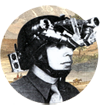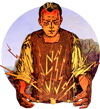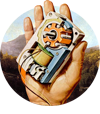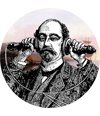Editing, and archiving, and organizing! Oh, my!
Life at Center for Digital Storytelling has become much busier since my last field report, and while I still love the Bay Area, I now have far less time to spend reveling in its warm glow.
I.
As one of the Assistant Editors for our Executive Director's book on digital storytelling, I have spent countless days and nights editing the book's content and grammar. But luckily, I'm not the only one editing. Fellow VISTA, Oriana, is also working on the editing, and within the next few weeks it should be ready to go out to the publishers again for it's fourth or fifth edition.
II.
CDS' archives have also occupied a lot of my time, but the results of this assignment are far less tangible. Over the past month I have been able to break down CDS' archiving needs into four categories that will all be implemented over the course of the year:
1)Archiving our digital media via "deep storage:"
This includes transferring over six terabytes of data (digital stories) onto LTO tape, a long-term archival solution that helps to preserve digital media by placing it onto a hardcopy form that won't crash if there's a hard drive failure.
2)Archiving our digital media via a RAID system:
Basically, the RAID consists of multiple hard drives that copy all of our information across numerous other hard drives in order to a)store the data, and 2) prevent the data from being lost in the event of a system crash. This data would comprise all of the digital stories made in all of our workshops over the past 15 years. But overall, RAID's are annoying and very technical, and if you have any other questions please feel free to email me.
3)Archiving our digital media via a networked server:
This aspect of the project consists of uploading all of our data onto a server and making accessible to our instructors when they are out giving presentations and want to cue up an old story that has some relevancy to whatever it is that they're teaching. Furthermore, online access is the first step to making a YouTube-like interface where the public could watch and upload digital stories.
4)Archiving our digital media via our physical library:
Yes, in data management you need lots and lots of redundancy. "Redundancy" refers to making multiple copies of the same information so as to prevent data loss. Therefore, in having a physical back-up of each and every digital story at CDS, we can be sure that if EVERYTHING ELSE fails, then we will have CD's or DVD's of EVERYTHING. However, *ahem* earthquakes *ahem* "The Big One" *ahem*, could just do it all in.
But before any of this can be done, an organizational system must be implemented. It is of no use to have everything stored unless specific files ca be located. So that brings me to the next task: taxonomy! How does one categorize 6,000+ pieces of content? Good question! Tune-in next time.
III.
And finally, my third Great Task at CDS is to be the Managing Editor for CDS' next book which will look at how people's stories help them establish a better sense of place, or identity. This prospect is VERY, VERY exciting.
Until next time,
Patrick Castrenze













Comment from Mira Allen on October 8, 2009 - 12:39pm
That's quite a task you've got in front of you. Keep up the awesomeness!